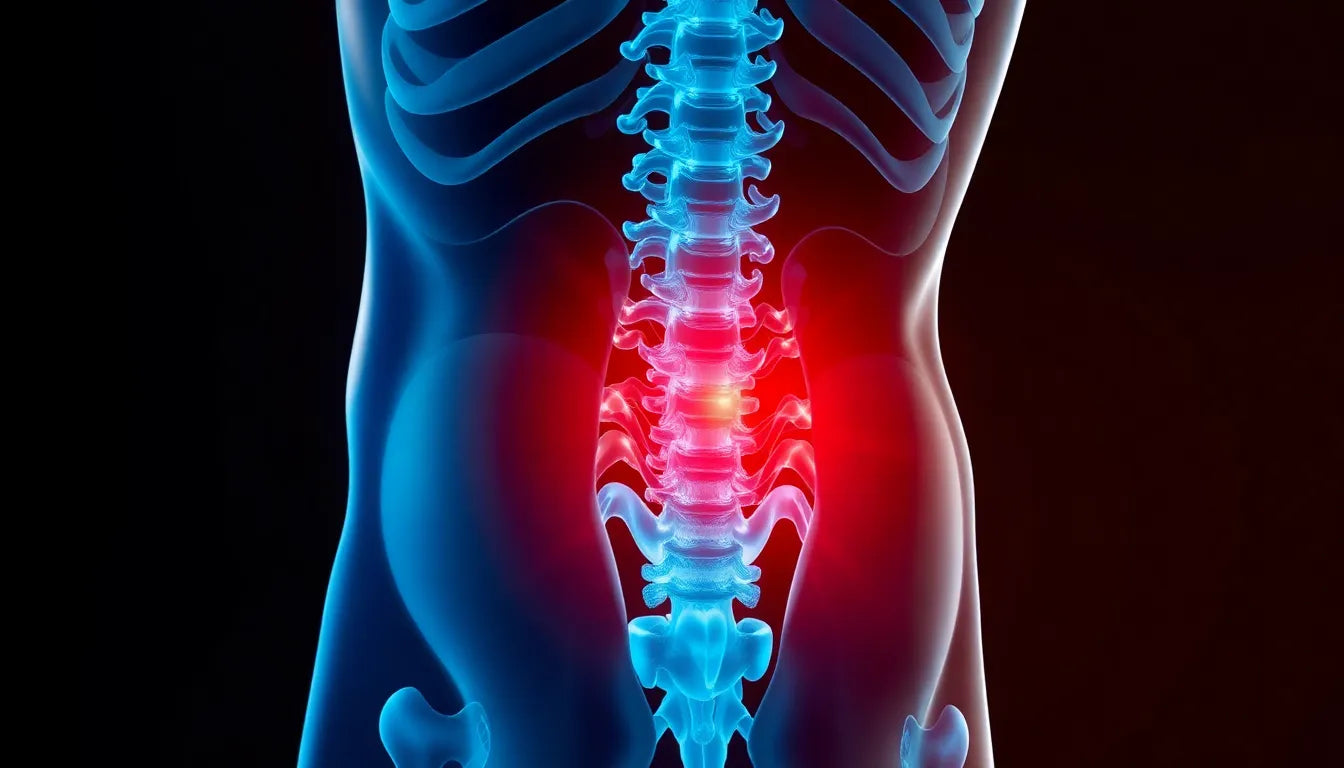Experiencing unexplained back pain or numbness? It might be more than just a muscle strain. These symptoms could be indicative of a herniated disc, a condition that can significantly impact your daily life. Understanding the nature and symptoms of a herniated disc is crucial for early detection and effective management.
Understanding herniated discs
A herniated disc occurs when the soft, gel-like center of a spinal disc pushes through a tear in the tougher outer layer. This displacement can irritate nearby nerves, leading to pain, numbness, or weakness in the limbs. Herniated discs are quite common, especially among individuals aged 30 to 50, and can be triggered by factors such as aging, improper lifting, or a sudden strain on the spine.
The prevalence of herniated discs makes them a significant concern, as they can affect one's mobility and overall comfort. Whether you're an athlete, a desk worker, or someone who enjoys an active lifestyle, a herniated disc can disrupt your routine and limit your ability to perform everyday tasks.
The importance of early detection
Recognizing the symptoms of a herniated disc early on can lead to better management and improved outcomes. Many people dismiss initial signs as minor aches or muscle strains, but understanding the specific symptoms can help you seek timely medical advice. Early detection not only aids in alleviating discomfort but also prevents the condition from worsening, which can lead to more severe complications.
This blog post aims to equip you with the knowledge to identify potential herniated disc symptoms. By understanding these signs, you can take proactive steps towards addressing the condition and maintaining your quality of life. In the following sections, we will delve deeper into the specific symptoms associated with different spinal regions and discuss how these symptoms can progress if left untreated.
core symptoms by spinal region
Understanding herniated disc symptoms involves recognizing how they manifest differently depending on the location of the affected disc. The spine is divided into three main regions: lumbar, cervical, and thoracic, each with distinct symptom profiles.
lumbar (lower back) symptoms
The lumbar region, located in the lower back, is the most common site for herniated discs. When a disc herniates here, it can lead to symptoms such as:
- Pain radiating down the leg (sciatica): This is a hallmark symptom where pain travels from the lower back through the buttock and down the leg, often reaching the foot.
- Numbness or tingling: Affected individuals may experience these sensations in the leg or foot, indicating nerve involvement.
- Muscle weakness: This can affect one's ability to walk or stand for extended periods, potentially leading to a noticeable limp or difficulty with balance.
cervical (neck) symptoms
In the cervical region, or neck area, herniated discs can cause a different set of symptoms:
- Pain radiating to the shoulder, arm, and hand: This pain can vary in intensity and may be accompanied by a burning sensation.
- Numbness or tingling: These symptoms often occur in the arm or fingers, sometimes affecting the ability to perform fine motor tasks.
- Muscle weakness: A decrease in grip strength is common, making it difficult to hold or carry objects.
thoracic (mid-back) symptoms
Though less common, herniated discs can occur in the thoracic region, leading to unique symptoms:
- Pain around the chest or upper abdomen: This pain can sometimes mimic cardiac issues, necessitating careful evaluation.
- Numbness or tingling: These sensations may be felt in the torso, potentially affecting posture and movement.
symptom progression and aggravation
Herniated disc symptoms often start subtly and can progressively worsen if not addressed. Activities such as sitting for long periods, bending, or even sneezing can exacerbate the pain. Initially, you might notice mild discomfort that gradually intensifies, potentially leading to severe pain or disability.
Early intervention is crucial, as untreated symptoms can lead to chronic pain and diminished quality of life. Recognizing the signs and seeking medical advice can prevent the condition from escalating.
severity and emergency indicators
While many herniated disc symptoms can be managed with conservative treatments, certain signs indicate the need for immediate medical attention:
- Loss of bowel or bladder control: This is a serious symptom that may suggest cauda equina syndrome, a medical emergency.
- Numbness in the saddle area: A loss of sensation around the groin or inner thighs can also indicate a severe issue.
- Profound leg weakness or difficulty walking: These symptoms may signal significant nerve compression requiring urgent care.
Understanding these symptoms and their potential progression is vital for timely intervention and effective management. The next section will explore how symptoms can vary and what steps can be taken to manage them effectively.
Understanding symptom variability
Herniated disc symptoms can vary significantly among individuals, both in intensity and duration. Some people may experience sharp, debilitating pain, while others might only notice a mild, persistent ache. The variability often depends on the location of the herniated disc and the extent of nerve involvement.
In many cases, symptoms may resolve over several weeks with conservative care, such as rest, physical therapy, and the use of anti-inflammatory medications. However, for some, symptoms might persist or even worsen, necessitating further medical evaluation and potentially more intensive treatments.
Reassurance and management
It's important to note that many individuals with herniated discs see significant improvement over time without the need for surgical intervention. Non-surgical treatments, including physical therapy, ergonomic aids, and lifestyle modifications, are often effective in managing symptoms and improving quality of life. Physical therapy can help strengthen the muscles around the spine, reducing pressure on the affected disc and facilitating recovery.
Ergonomic aids, such as lumbar supports or standing desks, can also alleviate strain on the spine, especially for those who spend long hours sitting. Additionally, maintaining a healthy weight and engaging in regular, low-impact exercises like walking or swimming can further support spinal health and prevent future issues.
Frequently Asked Questions
What are the first signs of a herniated disc?
Initial signs often include localized pain in the back or neck, followed by numbness or tingling in the limbs. These symptoms may gradually worsen if not addressed early.
How is a herniated disc diagnosed?
Diagnosis typically involves a physical examination, a review of medical history, and imaging tests such as MRI or CT scans to confirm the presence and extent of the herniation.
Can a herniated disc heal on its own?
Yes, many cases improve with conservative treatments like rest, physical therapy, and anti-inflammatory medications. The body's natural healing processes often lead to symptom resolution over time.
When should I see a doctor for back pain?
Seek medical attention if you experience severe pain, loss of bowel or bladder control, or significant weakness in the limbs, as these could indicate a serious condition requiring urgent care.
What lifestyle changes can help manage symptoms?
Maintaining good posture, using ergonomic aids, engaging in regular exercise, and managing weight can help alleviate symptoms and prevent further spinal issues. These changes support overall spine health and reduce the risk of future herniations.
Understanding herniated disc symptoms and their potential progression is essential for effective management and recovery. By recognizing the signs early and adopting appropriate lifestyle changes, you can take proactive steps to maintain your spine health and overall well-being.
Sources
- Barrow Neurological Institute. "Understanding Herniated Disc Symptoms by Location."
- Harvard Health Publishing. "Symptoms of a Herniated Disc: A Clinical Overview."
- MedlinePlus. "Herniated Disc: Symptoms and Patient Guidance."
- Medical News Today. "Herniated Disc Symptoms Explained in Plain Language."
- NY Presbyterian Och Spine. "Stages and Symptoms of Disc Herniation."
- Semrush Blog. "SERP Analysis Methodology for Herniated Disc Symptoms."


















